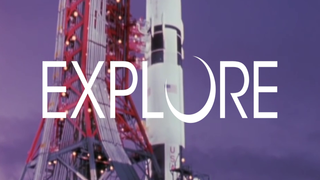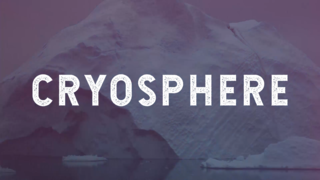Earth
ID: 14190
It’s not rockets and satellites that make NASA soar. It’s people. NASA Explorers is a new digital series that takes you inside the space agency and follows the pioneers, risk-takers and experts at the front line of exploration. Earth is a planet marked by fire. Summer wildfires rage across the western United States and Canada, Australia and Europe. In early spring, agricultural fires blanket Southeast Asia and burn throughout the dry season in central and southern Africa and Brazil. Fire is a natural part of many ecosystems. In season 3 of NASA Explorers, “Fires,” join researchers from the Canadian Arctic to Southeast Asia studying fire and how it changes with the planet.
Episode One: Seeing Through Smoke
To understand fires on Earth, you need a broad view — spanning from the poles to the equator and looking from high above the planet to down deep under the soil. That’s where NASA Explorers come in! With satellites, with airplanes, with their own hands and with a data record spanning decades, Explorers are studying how our planet burns… and how that burning changes with the climate. This season, we’re headed to the western Pacific Ocean to the Northwest Territories and beyond to look fires on Earth.
Episode Two: Follow that Plume!
Chasing smoke is a round-the-clock business. Wildfire smoke can travel long distances and over several days, so NASA Explorers with the Fire Influence on Regional to Global Environments and Air Quality (FIREX-AQ) mission took to the field to find where it goes. From a plane directly above the Shady Fire in the middle of the afternoon to a valley in the Sawtooth Mountains at 1 in the morning, explorers are gathering important data about how fire smoke affects communities near and far.
Episode Three: Thee Carbon Problem
In the Arctic, fires are a natural part of the ecosystem. But as the climate changes, fires are burning longer and hotter, releasing long-buried carbon from the soil. NASA Explorers are looking from high in the sky to deep below the ground to better understand how a warming climate affects fires in the Arctic…and how fires in the region will contribute to climate change in the future.
Episode Four: Chasing Clouds
"Earth science is a subject far too big for one country, one agency, to tackle all by itself.” So NASA Explorers team up with researchers from around the country and the planet to answer some big questions about fires, clouds and climate from the Western Pacific, where we still have a lot to learn about the interaction between fires and cloud formation.
Episode Five: The New Normal
As the planet warms, fire seasons burn year-round and more areas are becoming flammable. NASA Explorers are studying how fires are changing with the climate, and tracking how landscapes change after fires. With satellite data, people on the ground and partners with communities and agencies around the planet, NASA Explorers are helping prepare for the “new normal” of fires on Earth.
NASA Explorers | Season Three: Fires
It’s not rockets and satellites that make NASA soar. It’s people. NASA Explorers is a new digital series that takes you inside the space agency and follows the pioneers, risk-takers and experts at the front line of exploration. Earth is a planet marked by fire. Summer wildfires rage across the western United States and Canada, Australia and Europe. In early spring, agricultural fires blanket Southeast Asia and burn throughout the dry season in central and southern Africa and Brazil. Fire is a natural part of many ecosystems. In season 3 of NASA Explorers, “Fires,” join researchers from the Canadian Arctic to Southeast Asia studying fire and how it changes with the planet.
Episode One: Seeing Through Smoke
To understand fires on Earth, you need a broad view — spanning from the poles to the equator and looking from high above the planet to down deep under the soil. That’s where NASA Explorers come in! With satellites, with airplanes, with their own hands and with a data record spanning decades, Explorers are studying how our planet burns… and how that burning changes with the climate. This season, we’re headed to the western Pacific Ocean to the Northwest Territories and beyond to look fires on Earth.
Episode Two: Follow that Plume!
Chasing smoke is a round-the-clock business. Wildfire smoke can travel long distances and over several days, so NASA Explorers with the Fire Influence on Regional to Global Environments and Air Quality (FIREX-AQ) mission took to the field to find where it goes. From a plane directly above the Shady Fire in the middle of the afternoon to a valley in the Sawtooth Mountains at 1 in the morning, explorers are gathering important data about how fire smoke affects communities near and far.
Episode Three: Thee Carbon Problem
In the Arctic, fires are a natural part of the ecosystem. But as the climate changes, fires are burning longer and hotter, releasing long-buried carbon from the soil. NASA Explorers are looking from high in the sky to deep below the ground to better understand how a warming climate affects fires in the Arctic…and how fires in the region will contribute to climate change in the future.
Episode Four: Chasing Clouds
"Earth science is a subject far too big for one country, one agency, to tackle all by itself.” So NASA Explorers team up with researchers from around the country and the planet to answer some big questions about fires, clouds and climate from the Western Pacific, where we still have a lot to learn about the interaction between fires and cloud formation.
Episode Five: The New Normal
As the planet warms, fire seasons burn year-round and more areas are becoming flammable. NASA Explorers are studying how fires are changing with the climate, and tracking how landscapes change after fires. With satellite data, people on the ground and partners with communities and agencies around the planet, NASA Explorers are helping prepare for the “new normal” of fires on Earth.
Related
Credits
LK Ward (KBR Wyle Services, LLC): Lead Producer
Kathryn Mersmann (KBR Wyle Services, LLC): Producer
Matthew Radcliff (KBRwyle): Producer
Patrick Lynch (NASA/GSFC): Producer
Kathryn Mersmann (KBR Wyle Services, LLC): Lead Social Media Support
Brittany A. Brown (NASA/HQ): Social Media Support
Sarah Loff (MORI ASSOCIATES INC): Social Media Support
LK Ward (KBR Wyle Services, LLC): Videographer
Kathryn Mersmann (KBR Wyle Services, LLC): Videographer
James Round (NASA/JPL CalTech): Videographer
John Caldwell (Advocates in Manpower Management, Inc.): Videographer
Rob Andreoli (Advocates in Manpower Management, Inc.): Videographer
Dave Glantz (Freelance): Lead Animator
Walt Feimer (KBR Wyle Services, LLC): Animator
Doug C. Morton (NASA/GSFC): Lead Scientist
Amber Soja (NASA/LaRC): Scientist
Bruce Anderson (NASA/LaRC): Scientist
Kevin Schaefer (NSIDC): Scientist
Keith T. Weber (Idaho State University): Scientist
Hal B. Maring (NASA/HQ): Scientist
Gemma Narisma (Manila Observatory): Scientist
Cindy Starr (Global Science and Technology, Inc.): Visualizer
Trent L. Schindler (USRA): Visualizer
Peter Griffith (SSAI): Project Support
Elizabeth Hoy (GST): Project Support
Emily Schaller (University of North Dakota/AFRC): Project Support
Samson K. Reiny (Wyle Information Systems): Project Support
Maria-Jose Vinas Garcia (Telophase): Project Support
Katie Jepson (KBR Wyle Services, LLC): Project Support
Ellen T. Gray (ADNET Systems, Inc.): Project Support
Ryan Fitzgibbons (KBR Wyle Services, LLC): Project Support
Kathryn Mersmann (KBR Wyle Services, LLC): Producer
Matthew Radcliff (KBRwyle): Producer
Patrick Lynch (NASA/GSFC): Producer
Kathryn Mersmann (KBR Wyle Services, LLC): Lead Social Media Support
Brittany A. Brown (NASA/HQ): Social Media Support
Sarah Loff (MORI ASSOCIATES INC): Social Media Support
LK Ward (KBR Wyle Services, LLC): Videographer
Kathryn Mersmann (KBR Wyle Services, LLC): Videographer
James Round (NASA/JPL CalTech): Videographer
John Caldwell (Advocates in Manpower Management, Inc.): Videographer
Rob Andreoli (Advocates in Manpower Management, Inc.): Videographer
Dave Glantz (Freelance): Lead Animator
Walt Feimer (KBR Wyle Services, LLC): Animator
Doug C. Morton (NASA/GSFC): Lead Scientist
Amber Soja (NASA/LaRC): Scientist
Bruce Anderson (NASA/LaRC): Scientist
Kevin Schaefer (NSIDC): Scientist
Keith T. Weber (Idaho State University): Scientist
Hal B. Maring (NASA/HQ): Scientist
Gemma Narisma (Manila Observatory): Scientist
Cindy Starr (Global Science and Technology, Inc.): Visualizer
Trent L. Schindler (USRA): Visualizer
Peter Griffith (SSAI): Project Support
Elizabeth Hoy (GST): Project Support
Emily Schaller (University of North Dakota/AFRC): Project Support
Samson K. Reiny (Wyle Information Systems): Project Support
Maria-Jose Vinas Garcia (Telophase): Project Support
Katie Jepson (KBR Wyle Services, LLC): Project Support
Ellen T. Gray (ADNET Systems, Inc.): Project Support
Ryan Fitzgibbons (KBR Wyle Services, LLC): Project Support
Please give credit for this item to:
NASA's Goddard Space Flight Center
NASA's Goddard Space Flight Center
Short URL to share this page:
https://svs.gsfc.nasa.gov/14190
This item is part of this series:
Narrated Movies
Keywords:
DLESE >> Human geography
DLESE >> Natural hazards
GCMD >> Earth Science >> Human Dimensions >> Natural Hazards >> Fires
GCMD >> Location >> Canada
GCMD >> Location >> Philippines
GCMD >> Location >> Idaho
SVS >> Amazon Basin
NASA Science >> Earth
SVS >> NASA Explorers
GCMD keywords can be found on the Internet with the following citation: Olsen, L.M., G. Major, K. Shein, J. Scialdone, S. Ritz, T. Stevens, M. Morahan, A. Aleman, R. Vogel, S. Leicester, H. Weir, M. Meaux, S. Grebas, C.Solomon, M. Holland, T. Northcutt, R. A. Restrepo, R. Bilodeau, 2013. NASA/Global Change Master Directory (GCMD) Earth Science Keywords. Version 8.0.0.0.0
https://svs.gsfc.nasa.gov/14190
This item is part of this series:
Narrated Movies
Keywords:
DLESE >> Human geography
DLESE >> Natural hazards
GCMD >> Earth Science >> Human Dimensions >> Natural Hazards >> Fires
GCMD >> Location >> Canada
GCMD >> Location >> Philippines
GCMD >> Location >> Idaho
SVS >> Amazon Basin
NASA Science >> Earth
SVS >> NASA Explorers
GCMD keywords can be found on the Internet with the following citation: Olsen, L.M., G. Major, K. Shein, J. Scialdone, S. Ritz, T. Stevens, M. Morahan, A. Aleman, R. Vogel, S. Leicester, H. Weir, M. Meaux, S. Grebas, C.Solomon, M. Holland, T. Northcutt, R. A. Restrepo, R. Bilodeau, 2013. NASA/Global Change Master Directory (GCMD) Earth Science Keywords. Version 8.0.0.0.0













